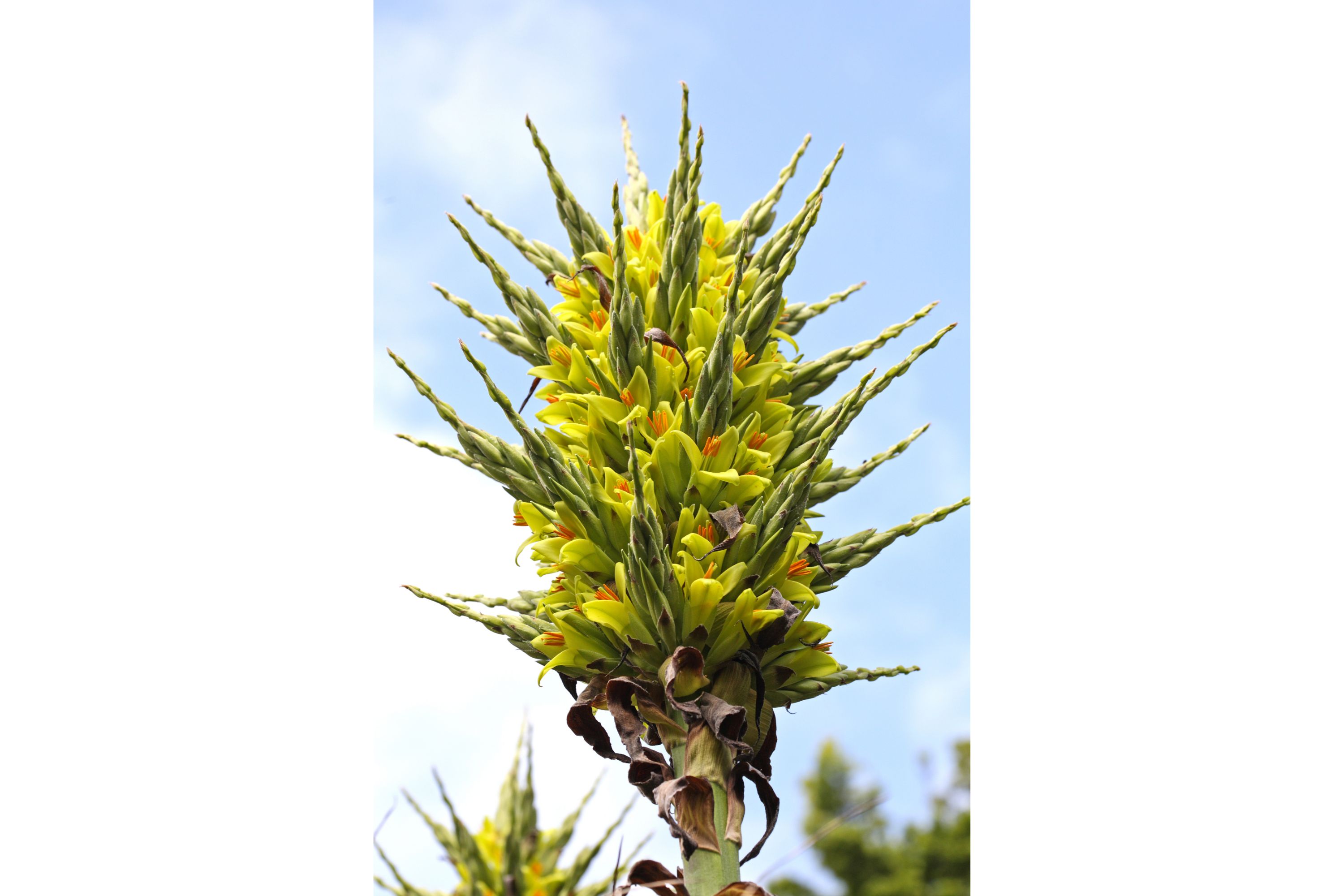Puya chilensis
(Puya chilensis)

Description
Puya chilensis is a terrestrial bromeliad originating from the arid hillsides of Chile. An evergreen perennial, it forms large, dense rosettes of grey-green, strap-like leaves edged with hooked spines. The green or yellow flowers are borne on spikes which resemble a medieval mace, and stand up to 2 m (6 ft 7 in) high. Spreading by offsets, Puya chilensis can colonise large areas over time. Growth is slow and plants may take 20 years or more to flower. The outer two-thirds of the leaf blade bears outward-pointing spines which may be an adaptation to prevent herbivores from reaching the center of the plant. The plant is believed to be hazardous to sheep and birds which may become entangled in the spines of the leaves. If the animal dies, the plant may gain nutrients as the animal decomposes nearby, though this has not been confirmed. For this reason, Puya chilensis has earned the nickname "sheep-eating plant". If true, this would make Puya chilensis a protocarnivorous plant. Fibers from the leaves are used to weave durable fishing-nets. It is commonly found on arid hillsides of the Andes, on north-facing slopes of matorral areas at 300–1,000 m (980–3,280 ft) above sea level. Puya chilensis is not considered threatened. It is also cultivated in many parts of the world. In its natural arid environment, plants can be highly flammable and are susceptible to damage from fires that are often the result of human action. Land clearance is an increasing threat. Puya is a genus of the botanical family Bromeliaceae. It is the sole genus of the subfamily Puyoideae, and is composed of 226 species. These terrestrial plants are native to the Andes Mountains of South America and southern Central America. Many of the species are monocarpic, with the parent plant dying after one flower and seed production event. The species Puya raimondii is notable as the largest species of bromeliad known, reaching 3 m tall in vegetative growth with a flower spike 9–10 m tall. The other species are also large, with the flower spikes mostly reaching 1–4 m tall. The name Puya was derived from the Mapuche Indian word meaning "point". The genus is commonly divided into two subgenera, Puya, containing eight species, and Puyopsis containing the remainder. The subgenera can be distinguished by the presence of a sterile inflorescence at the branch apex in Puya, which are fertile in Puyopsis.
Taxonomic tree:







